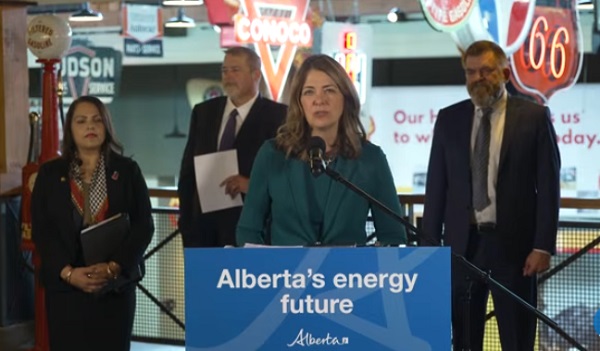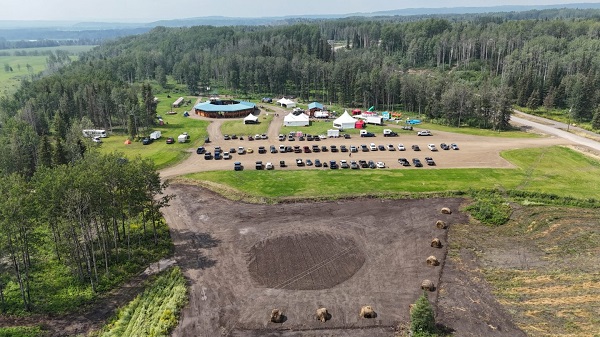Alberta
Proposed $70 billion AI data centre in MD of Greenview could launch an incredible new chapter for western Canadian energy
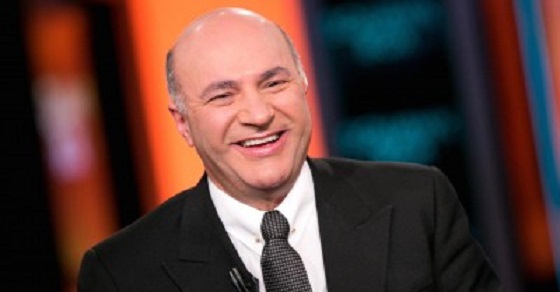
In case you missed it the other day, the Municipal District of Greenview, in west-central Alberta, announced some rather huge plans: to develop the “world’s largest AI Data Centre industrial Park”. The potential total value of the project could exceed a staggering $70 billion. This might, just might, be the tip of a big iceberg, because it shows the first indications that word is spreading about what some people have known for a while: there is no better place for these power-hungry data behemoths than the cold, relatively unpopulated, natural-gas-rich region of western Canada.
The announcement has garnered significant attention, which was awesome to see. The terms “AI data centre” and “$70 billion” will do that, and for good reason. AI is sweeping the world and no business or institution wants to be left behind. Furthermore, everyone wants them yesterday, and the challenge is where to put them all. It’s not easy finding the right place to plop something onto the grid within a few months that consumes the electricity of a small city, that doesn’t cause very problematic disruptions. We are in a power-short world, and this new entrant doesn’t really care. Which spells nothing but opportunity for power-rich regions.
Despite the positivity of the news release, it is important to keep our feet on the ground. Not meaning to be a buzzkill, here, but we shouldn’t fool ourselves that this will be easy. At any rate, here’s a quick run through the challenges, before getting to the more optimistic view. And in the spirit of Kevin O’Leary, I’ll let ‘er rip.
Mr. O’Leary is of course the driving force behind the Greenview AI project, which means that out of the chute it is going to be a colourful ride. He has dubbed himself “Mr. Wonderful” in an odd burst of mirth; the title is I guess supposed to be ironic because he, in his own words, courts controversy. He does seem to go out of his way to be provocative, with a certain Howard Stern-type shock-jock vibe that is not always helpful.
At least a few very bright people I’ve spoken to raise their eyebrows when they hear that Mr. O’Leary is leading this charge (he has even dubbed the location “Wonder Valley”, presumably a play on his chosen nickname, which comes across a bit like a tinpot dictator putting up a huge statue of himself). His business chatter is often mostly a lot of shouting, a lot of feathers but not much chicken; he is an astute businessman but seems to take delight in boisterous battles or boasts that cause people to think otherwise. In a recent BNN interview this past summer, he mused that he would buy TikTok (“I will be the buyer, I think”), which is a bit of an astonishing claim, considering that later in the conversation he went on to talk about his investment in a cupcake-in-a-jar business, which sounds fun, but does not enhance his Renaissance-man-style, nor when talking about executing 70 billion dollar projects. His focus is, to put it mildly, rather wild-eyed.
He is not a stranger to data centers, but even then his low polar moment of inertia leads to some serious longitudinal instability (oops, too much F1 lately). At the 2022 “Montana on the Rise Economic Summit”, he spoke extensively of data centers, concluding that data centers would be built “right here in Montana” because of the clean power attributes, and abundance of space and water. He went on to say that he would only place data centers (he does invest in them) where he requires “policy that he can see at least 7 years ahead.” When he invests in data centers, per his speech, what matters are two parameters: “the source of energy and the stability of the policy and the tax regime.” Regarding energy sources, he talked about Montana’s zero-carbon power sources as being key to this Montana vision of his. His statement was clear: clean power was the key to Montana data center development, from hydro, wind, nuclear. He introduced four speakers that each spoke of the clean power that was pretty much a prerequisite.
But now here he is leading the charge into Canada, which is a great omen possibly, more on that in a second, but it does fly in the face of what he said two years ago. In fact, not just two years ago but even earlier this year he was lamenting that Canada was un-investable. Here is another batch of sound bites from Mr. O’Leary from March 2024, where he vigorously follows up on his requirement for 7 clear years of policy vision: Canada is “run by complete idiots…Canada should have at least five of them [data centers]. There are none of them going on right now because you can’t get energy permits…you wouldn’t waste your time trying to go through the regulatory process of getting a permit issued…No one is going to risk capital there. You cannot get anything done in Canada, not in mining, not in data centers, not in anything to do with the federal government…”
Furthermore, as he ascertains, the challenges will be considerable. He was not wrong in his assessment of Canada’s challenging investment climate, and anyone involved in building anything in Canada can spill yarns until the cows come home about the endless challenges.
You wouldn’t know this by looking at the Wonder Valley website. It is somewhat different than the norm for this type of thing, in Canada – some entities that I am in touch with are attempting to build such projects, but are doing it the hard way – doing as much legwork as possible before making a big public statement, because of the considerable uncertainty. Mr. O’Leary has chosen a different tack, including creating a minute-long AI video of a dreamy forest landscape with prancing deer and pristine buildings, to go with his wonderful name, and anyone with any project development experience up here is well aware of the challenges that are being visually swept under the rug. It makes one wonder just where the project is at in the planning timeline, because the peacock feathers need to be affixed to something substantial, or they’re all just for show. And that’s where this project has an aura of haziness, because anyone that builds anything knows the flash is the easy part.
OK, that was the bad news. And it’s no surprise, we all know he is flamboyantly combative and blustery. But that’s not the end of the story.
Now let’s look at the good. And it could be very good indeed.
Regardless of the antics chronicled above, the fact remains that Mr. O’Leary is a very successful businessman, wh0 does not run from a challenge. There are also numerous reasons why he might just make this all happen despite his historical comments on the topic.
First off, Mr. O’Leary, like everyone else, no doubt has a different view of data centers than from 2022. The whole world has exploded in AI demand in just the past 12 months. So we can easily forgive him for that change of heart, including his adaptation to welcome natural gas. Given the current demand for AI services over the next few years, there is no other way.
Then Mr. O’Leary spoke of Canada being un-investable because of Ottawa. He’s not crazy there, I would agree completely. But the good news is that perhaps the winds of change are blowing so hard that investors might be willing to start placing bets that the era of insane governance in Canada is nearing the end. That would be a very good sign, because this country will continue to sink as long as the current regime keeps flexing in ways that terrify any investor that isn’t building a battery plant or other albatross with the fed’s $.
The last part of the good news equation is that Mr. O’Leary is publicizing something that is exactly right. From the Greenview/O’Leary news release: “Given existing permits, proximity to stranded sources of natural gas, pipeline infrastructure, water and a fiber optic network within just a few kilometers of the Greenview Industrial Gateway, we will be in the ground and up and running sooner than any scale project of its kind… The GIG’s ideal cold-weather climate, a highly skilled labor force, Alberta’s pro-business policies and attractive tax regime make the GIG the perfect site for this project.” Mr. O’Leary has not forgotten the carbon-free angle, noting that geothermal energy is under development in the region as well. And finally, the project, according to the news release, promises a positive relationship with First Nations, a cornerstone of any future large-scale industrial construction in any part of Canada that is not a major city.
Behind the regulatory woes, the tools required to make this project a success are mostly there. The energy sector has a formidable ability to get things done, with a strong, motivated workforce, world-class talent, and legendary enthusiasm. The dynamism of the sector has drawn young people from across the country for decades.
Thanks to the enthusiasm of producers, we are also blessed with many decades of reasonably priced natural gas; we are capable of producing far more than can find a home via pipe. If ever there was a poster child for “in-basin demand”, this is it. The infrastructure is there, the gas is there, the construction talent is there, the fiber optic linkages are there…it’s quite a list of assets.
Those of us watching the energy industry from the inside have known since the topic went viral that inland western Canada possesses everything necessary to successfully host massive AI data center developments. The challenge has been the vast, thick wet blanket of regulatory strangulation and business animosity that has grown like a weed across the country.
If it takes a bombastic guy like Kevin O’Leary to punch through that mess and start the first wave of what could be a very large infusion of capital into Canada, then so be it and I welcome his project and even him with open arms. Furthermore, I’m sure nothing drives him forward like being told he will not accomplish something.
And to be very clear on the point: Mr. O’Leary is an entrepreneurial guy who gets things done. That is exactly what we need more of in Canada. Or rather, we have lots of those types, but they’ve been demoralized for a decade by the current political and regulatory environment that actively dislikes the hydrocarbon sector. Maybe exactly what we need is someone larger than life to kickstart things. We do know that the demand for AI data centers seems insatiable, and once the trail is blazed for new, co-located projects, perhaps many more will rapidly follow.
Mr. O’Leary, wishing you all the best and I will gladly print and eat this column at your convenience (I get to choose font) should you bring Wonder Valley to life. If you do, it could be the cornerstone for a whole new industry up here, and the benefits to Canada will be glorious.
It’s all happening as expected, more or less – an energy transition isn’t quite so simple. Find out what readers knew years ago in The End of Fossil Fuel Insanity – the energy story for those that don’t live it, and want to find out. And laugh. Available at Amazon.ca, Indigo.ca, or Amazon.com.
Read more insightful analysis from Terry Etam here, or email Terry here.
Alberta
Jason Kenney’s Separatist Panic Misses the Point

By Collin May
Time was a former political leader’s expected role was to enjoy retirement in relative obscurity, resisting the urge to wade into political debate. Conservatives generally stick to that tradition. Ralph Klein certainly did after his term ended. Stephen Harper has made no attempt to upstage his successors. Yet former Alberta Premier Jason Kenney can’t seem to help himself.
From the boardroom of Bennett Jones, one of Calgary’s oldest law firms, Kenney recently offered his thoughts on the unspeakable horrors that await the province should it entertain a debate (perhaps even call a referendum) on separating from Canada. While dismissing Alberta separatists as a “perennially angry minority”, Kenney nevertheless declared a vote on separation would “would divide families, divide communities, divide friends for no useful purpose.” Business partnerships, church and community groups, even marriages and families would break apart, he warned, “shredding the social fabric of the province.”
It was a remarkable burst of untethered hyperbole, but it says more about the former premier than it does about the province he once led.
Kenney’s take on the history of Alberta separatism is telling. It’s a 50-year-old “discredited concept,” he said, whose acolytes “couldn’t get elected dogcatcher in this province.” Exhibit A in his analysis was Gordon Kesler, an Alberta rodeo rider and oil company scout who believed independence was the only way to save Alberta from Ottawa’s depredations. In a 1982 byelection, Kesler got himself very much elected as an MLA under the Western Canada Concept banner. He later lost in the general election to Peter Lougheed’s Progressive Conservatives, but Lougheed did not belittle Albertans for entertaining separatist notions. Instead, he asked for a mandate to fight Ottawa more effectively — and got it.
Kenney, by contrast, ridicules separatists while simultaneously painting them as an existential menace. Worse, he likens them to followers of Vladimir Putin and (perhaps even worse?) Donald Trump. “[I]f you just follow them on social media,” he claimed, one will quickly see that they cheered on Putin’s attack on Ukraine and Trump’s threat of making Canada the 51 st state.
Kenney’s latest intervention fits a pattern. As premier from 2019 to 2022, he could not resist trying to stamp out dissent. During the pandemic, he alienated political allies by dismissing their concerns about mandatory vaccines with contempt. He saw his ouster as UCP leader as the result of a Trumpian-inspired or “MAGA” campaign. UCP party faithful, however, said their rejection of him had far more to do with his top-down leadership style and habit of “blaming other people for the errors he made.”
What’s especially striking about Kenney’s separatist obsession is that he seems to understand as little about Albertans now as he did while premier. Albertans have long debated separation without the province descending into chaos. When Kesler won his seat, people talked about separation, argued its pros and cons, but couples were not running to their divorce lawyers over the issue and business partners were not at each other’s throats.
And there are legitimate reasons for concern about Canada’s social and political structure, as well as the role provinces play in that structure. Canada’s institutions operate largely on an old colonial model that concentrates power in the original population centre of southern Ontario and Quebec. This has not, and does not, make for great national cohesion or political participation. Instead, it feeds constant fuel to separatist fires.
The current threat to Canadian identity comes as well from the ideological commitments of our federal government. Early in his time as Prime Minister, Justin Trudeau declared Canada to be a “post-national” state. This sort of moniker is consistent with the popularly-designated woke doctrine that eschews the liberal nation-state, democratic procedures and individual freedom in favour of tribalist narratives and identity politics.
The obsession with post-nation-state policies has initiated the dissolution of the Canadian nation regardless of whether Quebeckers or Albertans actually vote for separation. We are all becoming de facto separatists within a dissolving Canada, a drift that current Prime Minister Mark Carney’s ineffective “elbows up” attitude has done nothing to reverse.
Kenney’s panicked musings about Alberta separatists would have us believe the province need only continue the fight for a better deal within the Canadian federation. Kenney pursued just such a policy, and failed signally to deliver. For too many Albertans today, his advice does not reflect the political reality on the ground nor appreciate the worrying trends within Canadian institutions and among our political class.
Kenney likes to associate himself with Edmund Burke, the father of conservatism and defender of venerable institutions. But Burke was known as much in his day for his sympathies with the American revolutionaries and their creation of an experimental new republic as he was for his contempt towards the French Revolution and its Reign of Terror. Burke’s conservatism still linked real actions with true words. It would be advisable, perhaps, to keep our own political language here in Alberta within the bounds of the plausible rather than fly off into the fanciful.
The original, full-length version of this article was recently published in C2C Journal.
Collin May is a lawyer, adjunct lecturer in community health sciences with the Cumming School of Medicine at the University of Calgary, and the author of a number of articles and reviews on the psychology, social theory and philosophy of cancel culture.
Alberta
Alberta’s E3 Lithium delivers first battery-grade lithium carbonate
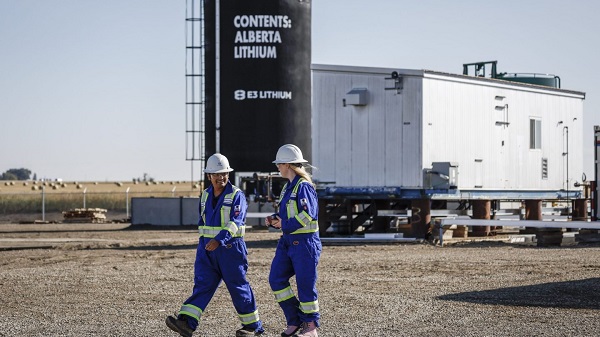
E3 Lithium employees walk through the company’s lithium pilot plant near Olds
From the Canadian Energy Centre
E3 Lithium milestone advances critical mineral for batteries and electrification
A new Alberta facility has produced its first battery-grade lithium carbonate, showcasing a technology that could unlock Canada’s largest resources of a critical mineral powering the evolving energy landscape.
In an unassuming quonset hut in a field near Olds, Calgary-based E3 Lithium’s demonstration plant uses technology to extract lithium from an ocean of “brine water” that has sat under Alberta’s landscape along with oil and gas for millions of years.
Lithium is one of six critical minerals the Government of Canada has prioritized for their potential to spur economic growth and their necessity as inputs for important products.
“The use for lithium is now mainly in batteries,” said E3 Lithium CEO Chris Doornbos.
“Everything we use in our daily lives that has a battery is now lithium ion: computers, phones, scooters, cars, battery storage, power walls in your house.”
Doornbos sees E3 as a new frontier in energy and mineral exploration in Alberta, using a resource that has long been there, sharing the geologic space with oil and gas.
“[Historically], oil and water came out together, and they separated the oil from the water,” he said.
“We don’t have oil. We take the lithium out of the water and put the water back.”
Lithium adds to Canada’s natural resource strength — the country’s reserves rank sixth in the world, according to Natural Resources Canada.
About 40 per cent of these reserves are in Alberta’s Bashaw District, home to the historic Leduc oilfield, where E3 built its new demonstration facility.
“It’s all in our Devonian rocks,” Doonbos said. “The Devonian Stack is a carbonate reef complex that would have looked like the Great Barrier Reef 400 million years ago. That’s where the lithium is.”
Funded in part by the Government of Canada and the Government of Alberta via Alberta Innovates and Emissions Reduction Alberta (ERA), the project aims to demonstrate that the Alberta reserve of lithium can be extracted and commercialized for battery production around the world.
E3 announced it had produced battery-grade lithium carbonate just over two weeks after commissioning began in early September.
In a statement, ERA celebrated the milestone of the opening of the facility as Alberta and Canada seek to find their place in the global race for more lithium as demand for the mineral increases.
“By supporting the first extraction facility in Olds, we’re helping reduce innovation risk, generate critical data, and pave the way for a commercial-scale lithium production right here in Alberta,” ERA said.
“The success from this significant project helps position Alberta as a global player in the critical minerals supply chain, driving the global electrification revolution with locally sourced lithium.”
With the first phase of the demonstration facility up and running, E3 has received regulatory permits to proceed with a second phase that involves drilling a production and injection well to confirm brine flow rates and reservoir characteristics. This will support designs for a full-scale commercial facility.
Lithium has been highlighted by the Alberta Energy Regulator (AER) as an emerging resource in the province.
The AER projects Alberta’s lithium output will grow from zero in 2024 to 12,300 tonnes by 2030 and nearly 15,000 tonnes by 2034. E3 believes it will beat these timeframes with the right access to project financing.
E3 has been able to leverage Alberta’s regulatory framework around the drilling of wells to expand into extraction of lithium brine.
“The regulator understands intimately what we are doing,” Doornbos said.
“They permit these types of wells and this type of operation every day. That’s a huge advantage to Alberta.”
-

 Agriculture2 days ago
Agriculture2 days ago“We Made it”: Healthy Ostriches Still Alive in Canada
-
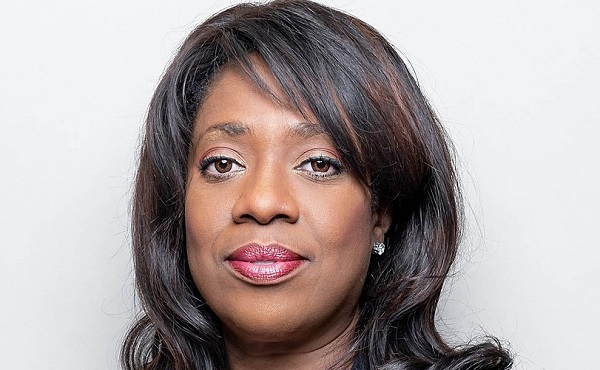
 National2 days ago
National2 days agoConservative MP Leslyn Lewis slams ‘hate speech’ bill for failing to address anti-Christian violence
-
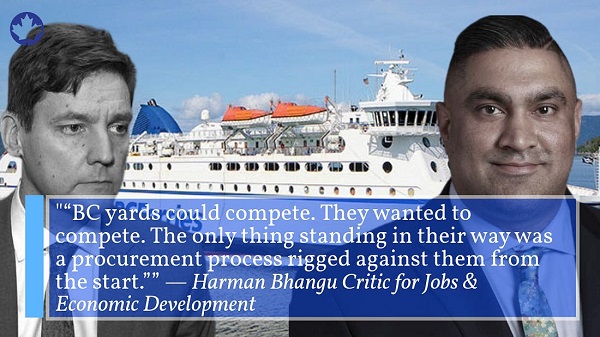
 Business14 hours ago
Business14 hours agoJobs Critic says NDP government lied to British Columbians and sold out Canadian workers in billion dollar Chinese ferries purchase
-

 Indigenous1 day ago
Indigenous1 day agoBloodvein First Nation blockade puts public land rights at risk
-
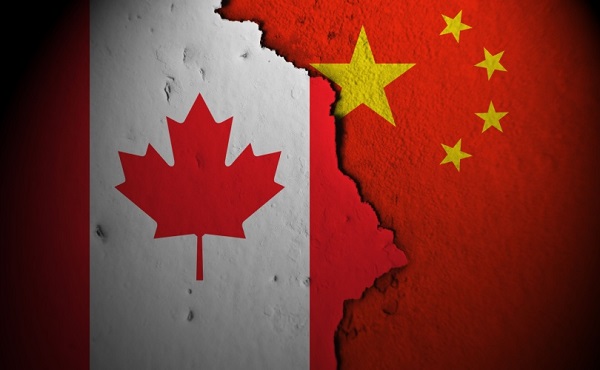
 Business2 days ago
Business2 days agoInquiry discloses Canada providing a reported $2.5 million in aid to Chinese universities
-

 Health2 days ago
Health2 days agoDisabled man needs help as hospital continues to pressure him with assisted suicide
-
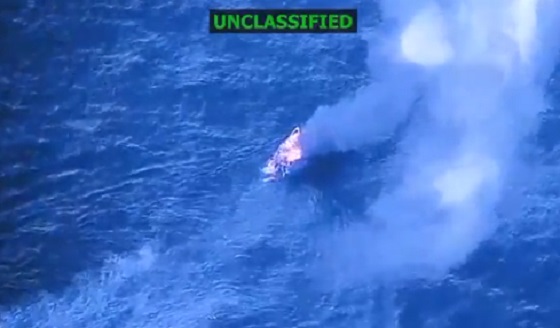
 International1 day ago
International1 day agoTrump says U.S. in ‘armed conflict’ with drug cartels in Caribbean
-

 Daily Caller2 days ago
Daily Caller2 days ago‘Special Day’: Trump Provides Big Update On Israeli Hostages




